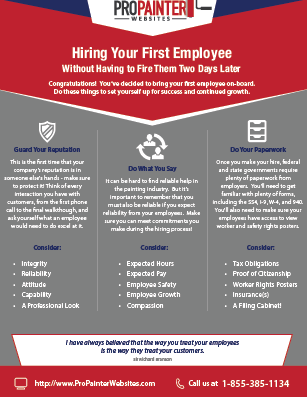The Role Of Weather Condition In Commercial Exterior Paint: What You Required To Know
The Role Of Weather Condition In Commercial Exterior Paint: What You Required To Know
Blog Article
Team Writer-McNamara Turan
When you're preparing an industrial outside paint job, don't undervalue the impact of climate on your results. You need to think about factors like temperature level, humidity, and precipitation, as they can make or damage your paint job. For instance, did you know that optimal problems ask for certain temperature level ranges and moisture degrees? Stopping working to keep an eye on these aspects can bring about uneven finishes and even damages to fresh paint. Comprehending these elements is essential to achieving a lasting, professional outcome. So, what specific weather should you watch out for?
Temperature Considerations
When it involves business exterior paint, temperature level plays an important function in the outcome of your task. If you're painting in severe warm, the paint can dry out as well rapidly, leading to concerns like poor bond and unequal finishes. You intend to go for temperature levels between 50 ° F and 85 ° F for the very best results. Listed below 50 ° F, paint might not heal appropriately, while above 85 ° F, you run the risk of blistering and fracturing.
Timing your project with the ideal temperature levels is crucial. Start your job early in the morning or later on in the afternoon when it's cooler, specifically throughout warm months.
Likewise, think about the surface temperature; it can be significantly greater than the air temperature level, specifically on warm days. Make use of a surface area thermometer to check this prior to you begin.
If temperature levels are unpredictable, watch on the weather report. Abrupt temperature level drops or heat waves can hinder your strategies. You do not intend to start painting only to have the conditions alter mid-project.
Moisture Degrees
Moisture levels considerably influence the success of your commercial exterior painting job. When the humidity is expensive, it can impede paint drying and treating, causing a range of issues like bad bond and complete top quality.
If you're planning a job during moist problems, you might discover that the paint takes longer to completely dry, which can extend your project timeline and increase costs.
On https://lukasintxc.webbuzzfeed.com/33784941/improving-the-method-of-paint-touch-ups-important-tips-and-techniques , reduced humidity can also present obstacles. Paint might dry as well quickly, protecting against proper application and resulting in an uneven coating.
https://www.redfin.com/blog/best-paint-colors-for-selling-a-house/ 'll wish to keep track of the humidity levels closely to guarantee you're working within the optimal array, usually in between 40% and 70%.
To get the very best results, consider making use of a hygrometer to measure moisture prior to beginning your job.
If you discover the levels are outside the ideal variety, you may need to change your routine or pick paints developed for variable conditions.
Constantly get in touch with the supplier's guidelines for details suggestions on moisture tolerance.
Rainfall Impact
Rain or snow can significantly interrupt your industrial external paint strategies. When rainfall takes place, it can wash away freshly applied paint or develop an irregular finish. Preferably, you wish to pick days with dry weather condition to ensure the paint adheres properly and remedies efficiently. If you're caught in a rain shower, it's ideal to stop the project and wait on conditions to improve.
Additionally, snow can be even more harmful. Not just does it produce a damp surface area, but it can additionally decrease temperatures, making it tough for paint to dry. This can lead to issues like peeling or blistering down the line.
It's crucial to inspect the weather prediction before starting your project. If rainfall or snow is anticipated, take into consideration rescheduling.
Constantly keep in mind to allow sufficient drying time in between coats, particularly if the weather condition remains unforeseeable.
Final thought
Finally, watching on the climate is essential for a successful industrial exterior painting task. By monitoring temperature level, humidity, and precipitation, you can make sure the most effective conditions for application and curing. Keep in mind to prepare your work around beneficial weather condition and always follow maker standards. With the ideal method, you'll achieve a resilient, attractive surface that can hold up against the components. Don't let the weather condition catch you off-guard-- remain notified and paint clever!
